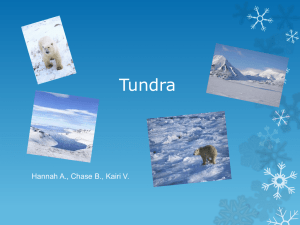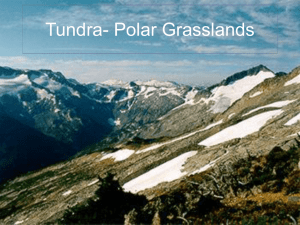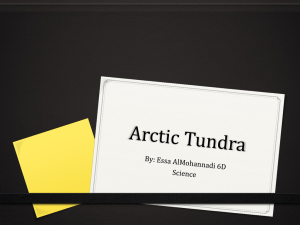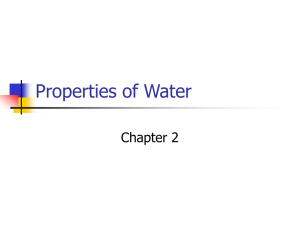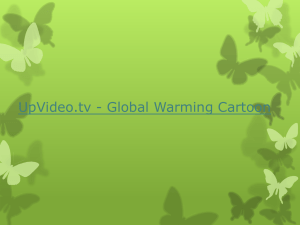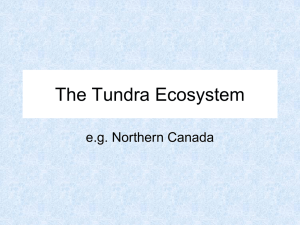4- High Latitude Ecosystems
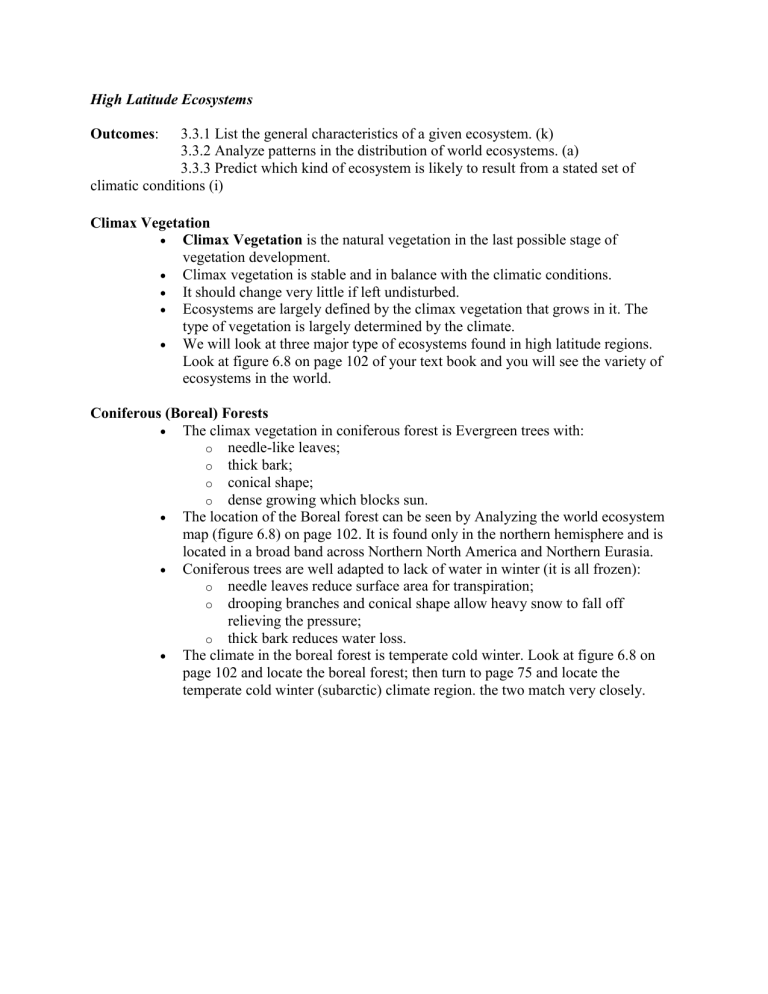
High Latitude Ecosystems
Outcomes : 3.3.1 List the general characteristics of a given ecosystem. (k)
3.3.2 Analyze patterns in the distribution of world ecosystems. (a)
3.3.3 Predict which kind of ecosystem is likely to result from a stated set of climatic conditions (i)
Climax Vegetation
Climax Vegetation is the natural vegetation in the last possible stage of
vegetation development.
Climax vegetation is stable and in balance with the climatic conditions.
It should change very little if left undisturbed.
Ecosystems are largely defined by the climax vegetation that grows in it. The
type of vegetation is largely determined by the climate.
We will look at three major type of ecosystems found in high latitude regions.
Look at figure 6.8 on page 102 of your text book and you will see the variety of ecosystems in the world.
Coniferous (Boreal) Forests
The climax vegetation in coniferous forest is Evergreen trees with:
o o o o needle-like leaves; thick bark; conical shape; dense growing which blocks sun.
The location of the Boreal forest can be seen by Analyzing the world ecosystem map (figure 6.8) on page 102. It is found only in the northern hemisphere and is located in a broad band across Northern North America and Northern Eurasia.
Coniferous trees are well adapted to lack of water in winter (it is all frozen): o o needle leaves reduce surface area for transpiration; drooping branches and conical shape allow heavy snow to fall off relieving the pressure;
o thick bark reduces water loss.
The climate in the boreal forest is temperate cold winter. Look at figure 6.8 on page 102 and locate the boreal forest; then turn to page 75 and locate the temperate cold winter (subarctic) climate region. the two match very closely.
Tundra
The climax vegetation in the Tundra is grasses, shrubs and low plants with: o shallow roots; o fast reproduction/flowering cycles.
The location of the Tundra can be seen by Analyzing the world ecosystem map
(figure 6.8) on page 102. It is found only in the northern hemisphere and is located north of the Boreal forest across Northern North America and Northern
Eurasia.
The shrubs and bushes are well adapted to the extreme climate of the north where winter is long and summer is very short: o shallow roots are needed because 1-3 meters below the surface the soil is o completely frozen (Permafrost); the fast flowering and reproduction cycle is needed because the growing season is very short, lasting only 1-2 months.
Animals have a variety of adaptations to the harsh Tundra climate. o hibernation from the cold winter; o migration in for the summer season and out for the winter season is a common strategy for Birds and even larger animals like caribou; o the development of insulating features like thick fur & fat insulation is common among polar bears and other mammals; o white fur/feathers to help with camouflage is another common adaptation.
The climate in the Tundra is so definitive of the tundra that it is called Tundra climate. Look at figure 6.8 on page 102 and locate the Tundra; then turn to page
75 and locate the Polar (Tundra) climate region. the two match very closely.
Polar Ice Caps
The climax vegetation in the Polar Ice Cap is Phytoplankton beneath the ice.
The location of the Polar Ice Caps can be seen by Analyzing the world ecosystem map (figure 6.8) on page 102. It is found only in both hemispheres and is located only in the extremely high latitudes.
The adaptation of producers to this ecosystem is extreme. There is no land for the producers to grow in so there are only small phytoplankton to form the base of the food chain.
Animals have a variety of adaptations to the harsh Polar ice cap climate. o o migration in for the summer season and out for the winter season is a common strategy for Birds and even larger animals like caribou; the development of insulating features like thick fur & fat insulation is common among polar bears and other mammals;
o white fur/feathers to help with camouflage is another common adaptation.
The climate in the Polar ice cap is so definitive of the Polar ice cap that it is called Polar (ice cap) climate. Look at figure 6.8 on page 102 and locate the Polar ice cap; then turn to page 75 and locate the Polar (Ice cap) climate region. the two match very closely.
Read: “Ecosystems Throughout the World" on pages 101-102 of your text.
Do: Complete Question #19 on page 102 of your text book.
